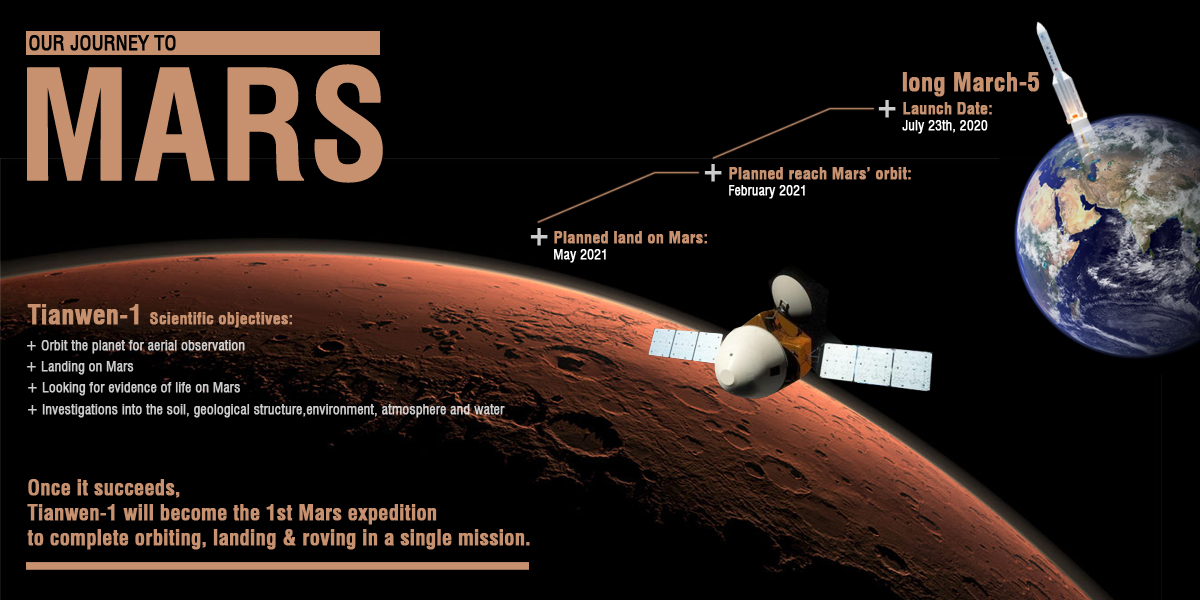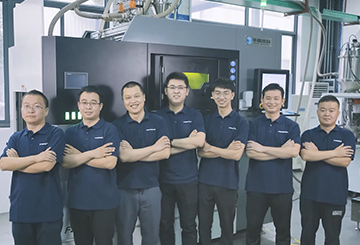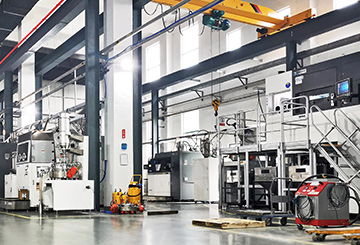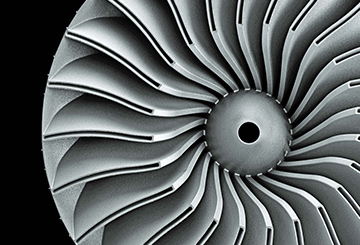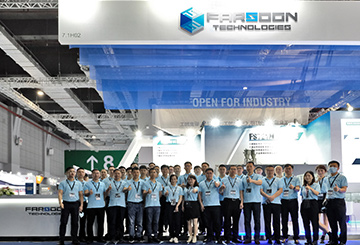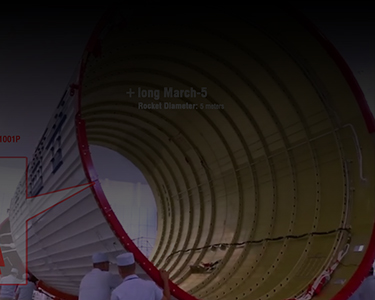July 23th, 2020 — the Long March-5 carrier rocket has announced success launch from Wenchang Space Launch Center and sent the first Mars probe Tianwen-1 to the planned orbit, taking a new major step exploring the Solar System.
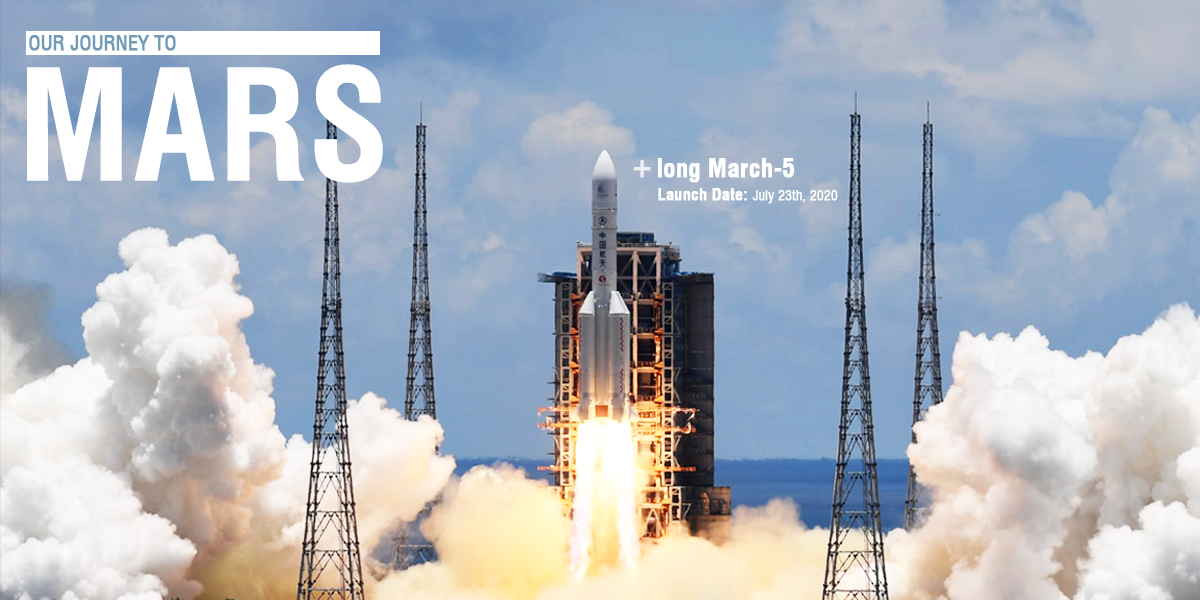
Developed for carrying 25 tons of payload in low earth orbit and 14 tons in geo-synchronous transfer orbit, the powerful Long March-5 heavy-lift rocket has a large diameter of 5 meters with four 3.35-meter boosters. Featuring an efficient multi-stage design, the Long March-5 rocket jettisons stages of its structure until reaching the desired final velocity and orbital height.
Known in rocketry circles as “staging”, this crucial process involves well-designed inter-stage structure system that requires highly functional, durable parts. Among a number of supporting components, the aluminum static firing skirt provides a temporary structural medium between the stage and the aft support ring to protect the unlocking device. It is cylindrically shaped and fitted with internal and external lift points, facilitating stage handling. After carefully evaluating, scientists designed the optimized static firing skirt per operating conditions and manufactured the end-use parts using Farsoon HT1001P laser sintering technology and high performance FS3300PA material.
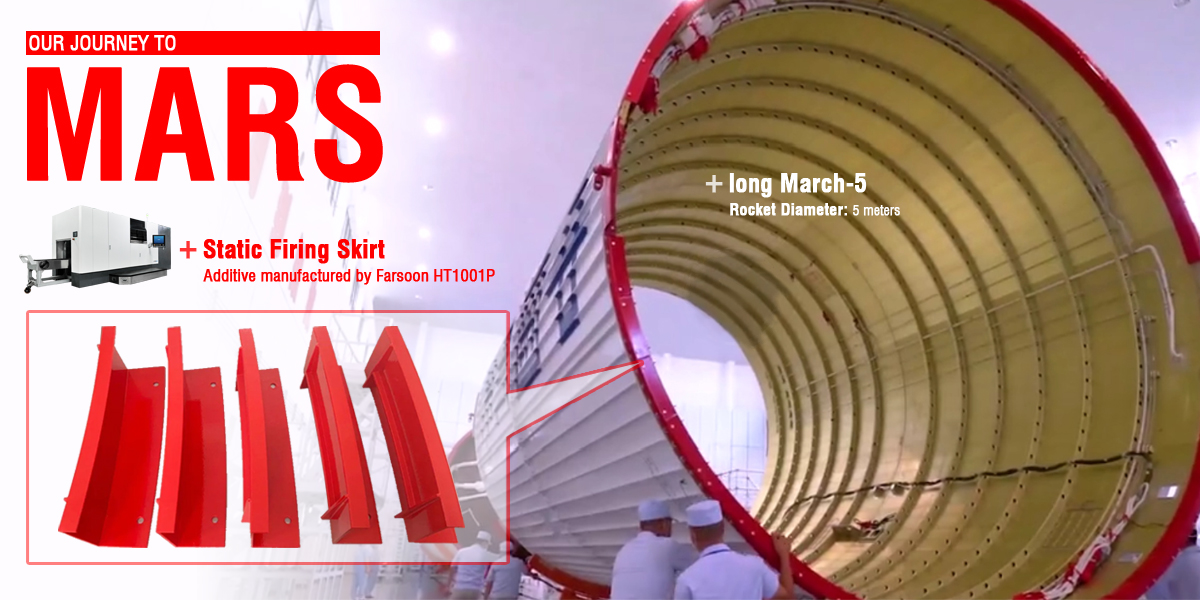
Being Farsoon’s largest system for plastic parts production, the HT1001P features an extended manufacturing envelope of 1000 x 500 x 450mm. The innovation of continuous operation also helps significantly accelerates production and reduces cost of manufacturing high-quality functional parts. The static firing skirt is produced in 50 separated pieces measuring 370 x 100 x 125mm by HT1001P in only 48 hours, and assembled to a 5000mm-diameter cylinder structure. The FS3300PA produced static firing skirt features excellent strength and toughness, ease of assembly, good post-processability for water-proofing and salt spray to assess the extreme atmospheric corrosion resistance.
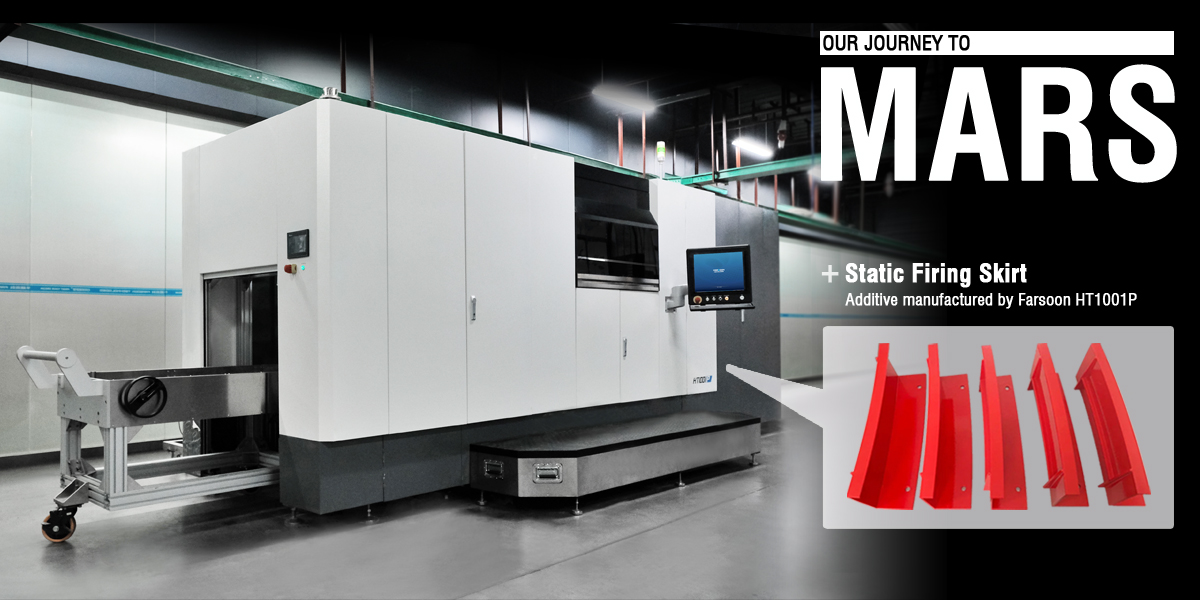
Tianwen-1 has now successfully carried out its first orbital correction on August 2nd, after travelling more than 230 hours in space and 3 million kilometers away from the earth, according to the China National Space Administration (CNSA). Once it succeeds, Tianwen-1 will become the first Mars expedition to complete orbiting, landing and roving in a single mission. Farsoon is proud to contribute to space science and to demonstrate that 3D printing as an innovative manufacturing method for a wider range of end-use applications.
